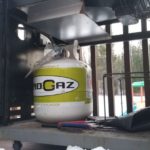Read along to learn the method of how to smoke meat in the wild, with some tips we hope you’ll love for a perfect end result.
Smoked meat can best be described as the art of cooking with the use of a consistent smoke. The method provides a delicious and distinct flavor to meat while also being used to preserve. Many types of meat can be smoked, whether it be beef, pork, venison or all types of fish.
You’ve probably heard of people smoking their own meat at home with the use of an outdoor smoker. However, smoking meat without a smoker can also be done. A camping trip is a great time to give it a try, while enjoying your time in nature.
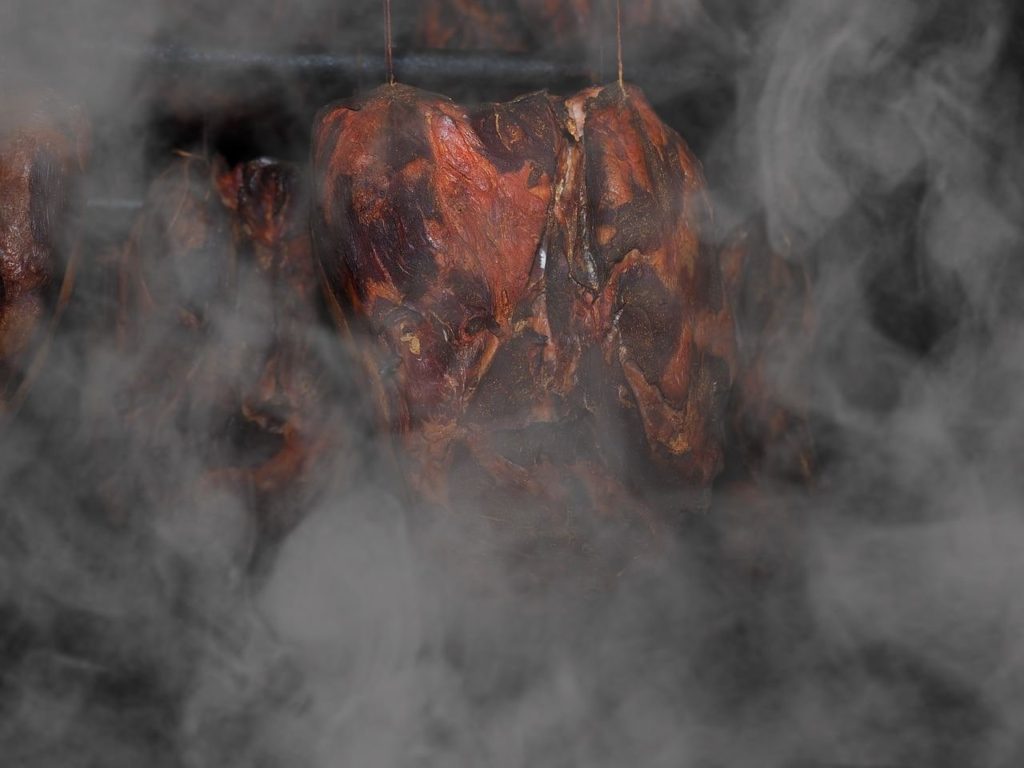
A camping trip is a place where every new activity accomplished feels like a great achievement and time is of no issue. Trying new things and doing more with less is just one of the great things about any camping or backwoods adventure. That mindset can be especially true when cooking.
Cooking over an open campfire is extremely satisfying and super tasty as well!
Smoked meat might not be the first thing that comes to mind when planning your camping meals. You probably think of burgers and hotdogs first. However, let me tell you a little secret…..Smoking meat over an open campfire is possible. Plus it’s delicious too!
If you’ve been wanting to know how to smoke meat in the wild over an open flame, then you’ll love these tips on ensuring that it is done to perfection. So, keep on reading along and you’ll know just how to smoke meat in the wild or in your backyard over an open campfire.
What you will need
- Fire pit
- Fire pit grill or grate
- Kindling
- Hardwood
- Lighter
- Sharp Knife
- Meat
What does smoking meat do?
Smoking meat is a process used for cooking or preserving meat while also adding flavor. It is one of the oldest cooking methods known to man and was pivotal in preserving meats in times when electricity and therefore fridges and freezers were non-existent.
During the winter months, meat could easily be frozen and preserved. However, during the warm seasons people needed to preserve meat for the future. The easiest way to preserve it was by removing the moisture in it. That is where the process of smoking came in.
Smoking meat is accomplished by either hanging meat or placing it on a rack and exposing it to the smoke created by a fire for a long period of time. The smoke removes the moisture from the meat, allowing it to be preserved and saved for long durations.
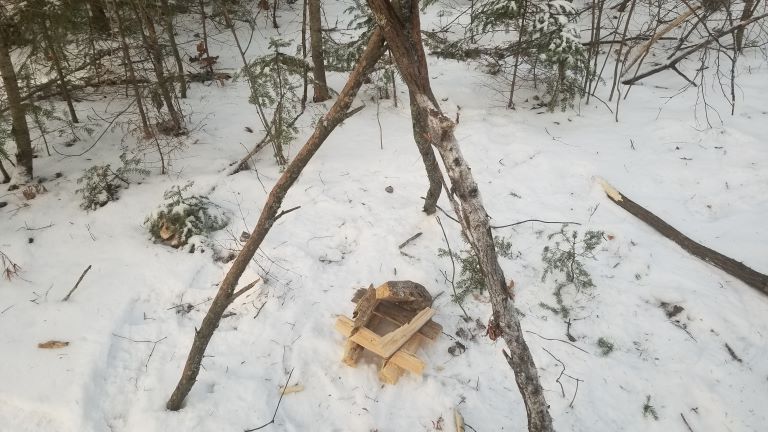
Preserving versus Cooking Meat
There are two main reasons for smoking meat and each reason comes with its own method.
- The first reason for smoking meat is to preserve it. In such a case, the meat is cold smoked for food preservation. Cold smoking meat occurs with temperatures around 60-120 degrees Fahrenheit and does not actually cook the meat, but rather dries it out. Before cold smoking, the meat is typically cured by adding salt or submerging the meat in a salt solution for approximately 5 minutes.
- The second reason for smoking meat is to add flavor while cooking the meat. In order to achieve this, the second method is known as hot smoking. Hot smoking occurs with temperatures of around 200-300 degrees Fahrenheit. The smoke will add the flavor of the wood being used, while slow cooking the meat to a tender consistency.
What type of meat is best for smoking?
Smoking works best for tougher cuts of meat that have lots of fat and connective tissue. The fat will absorb the smoke flavor while also preventing the meat from drying out over the long smoking process. A few good choices are beef brisket, beef spare ribs, pork shoulder, pork butt and fatty pork ribs.
Of course, one of the most famous and favorites for smoking is salmon fish.
Tips for Smoking Meat in the Wild Over an Open Campfire
Tip # 1 – Prepare the Meat
As noted earlier, there are two main types of smoking meat; cold smoking and hot smoking.
For cold smoking, which is used for preserving, you’ll want to trim away any excess fat and cut the meat into thin strips. The strips should then be salted or soaked in a salt solution for approximately 5 minutes.
If you are hot smoking the meat, it can be cut into thicker strips in comparison to cold smoking. However, keep in mind that the thicker the slice, the longer the smoking process will take as it will be cooking the meat through until the internal temperature has reached the optimal point.
For hot smoking, leaving some extra fat on the meat is ok as it will absorb the flavors of the wood smoke and keep the meat from drying out.
Tip # 2 – Setting up a Fire Pit and Grill
Smoking meat is a fairly simple process, but it is not a short one. You will probably want to use a designated fire pit for smoking the meat since it will take several hours to complete. One option is to make a small fire pit out of rocks, separate from your main cooking pit.
For the grill, you can opt to make a tripod type grill out of green branches or you can choose to use a metal grill grate. If using a metal grate, a great option is to use a swivel grill which allows you to move the meat around easily for heat regulation and removal.
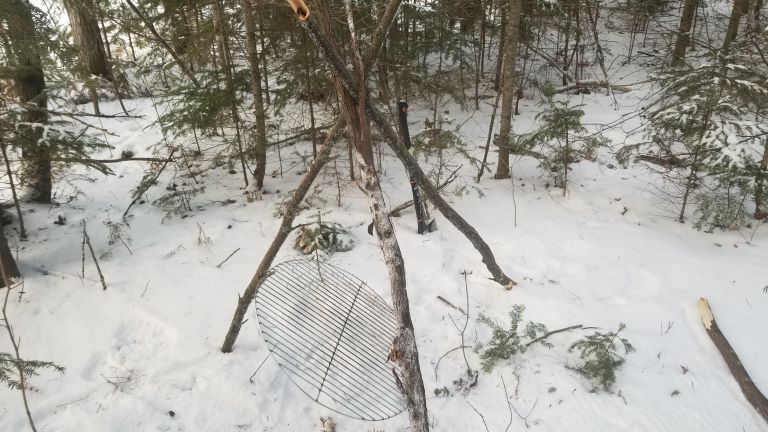
Tip # 3 – Burn Hardwood
To get the fire started, it’s ok to use dry kindling and softwoods as they will ignite faster and provide a good base.
However, when you put the meat on, you’ll want to burn woods that will burn slowly, while providing a consistent temperature and a hot bed of coals. Using hardwoods such as hickory, maple, or oak, or fruit woods such as apple and cherry will accomplish this. Avoid using any wood that is rotten or appears waterlogged as it will not create a lasting, hot fire. Also avoid softwoods such as pine or spruce which emit thick, crackling smoke and burn very hot and fast.
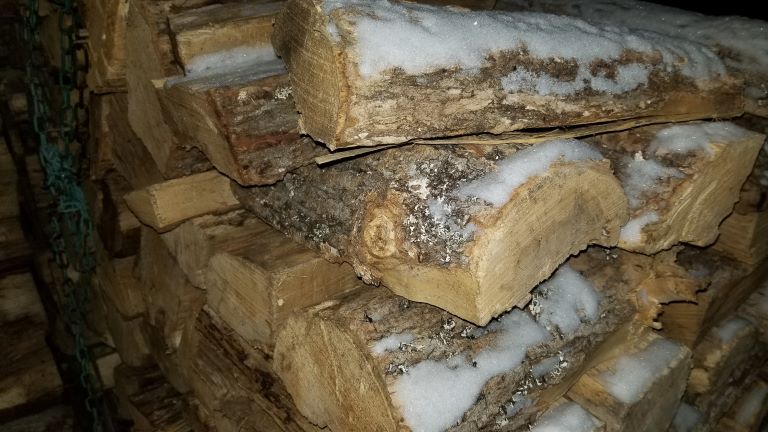
Tip # 4 – Find the Right Temperature
Smoking meat without a smoker means that you can’t simply turn a dial to the temperature you need and let it sit. Regulating the temperature is most definitely the hardest part about smoking meat over an open campfire. The temperature of the air and wind, among other factors, will make it difficult to hold a constant temperature.
The ideal temperature for cold smoking is between 60 and 120 degrees Fahrenheit. For hot smoking, the temperature should be between 200 and 300 degrees Fahrenheit for best results.
To keep the temperature consistent, make sure to maintain a hot bed of coals at all times. Add wood as needed around the edges of the fire so that there is a constant smoke, but keep the flames away from the meat. This is where a swivel grill really comes in handy for moving the meat around easily.
Tip # 5 – Build an Enclosure
Placing an enclosure around the fire pit will reduce the amount of smoke that escapes, speeding up the process and allowing more of the flavors to be absorbed into the meat. In addition, it will be much easier to regulate the temperature.
You’ll want to make sure that the flames don’t touch the enclosure material at any time, which could send it up in flames.
A few tried and true methods that work well for enclosing the fire pit are:
- A blanket wrapped around the tripod/fire pit
- Green, live coniferous tree branches placed around the fire pit
- Long strips of green, live tree bark surrounding the fire pit
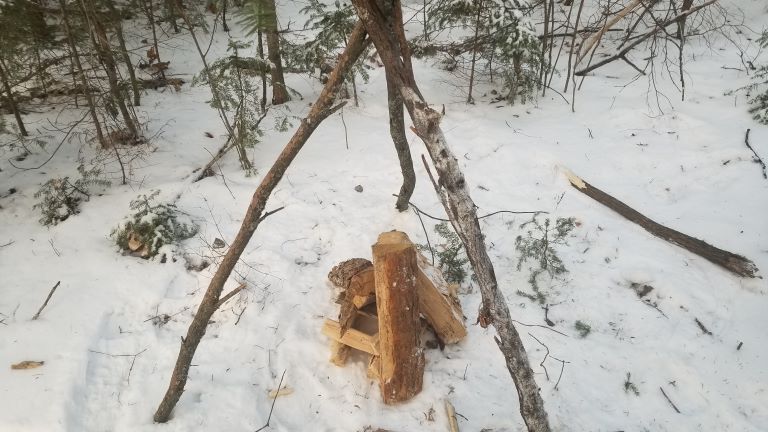
Cover as much of the tripod as possible and keep a close eye on it. Tree branches and bark will dry out throughout the process. If you notice that they are starting to get extremely dry and are in danger of igniting, then remove the material to avoid a catastrophe.
Tip # 6 – Be Patient
Smoking meat is a slow process that requires patience and time. Grab a beverage and a comfortable seat, chill out by the fire and enjoy a relaxing few hours while tending to the process. The end result will be a relaxing day and the perfect meal.
Tip # 7 – Stay Close By
This goes hand in hand with being patient. Don’t stray too far away from your meat while it’s smoking. Keep watch for both flames or a dying fire. One will result in burnt meat. The other will delay the process altogether. Move the meat up and down, as well as side-to-side to help keep a regular temperature and a constant smoke.
Tip # 8 – Be Prepared with the Right Utensils
Keeping in mind that you’ll want to have the fire pit enclosed as much as possible, access to the inside will likely be quite limited. A long pair of kitchen tongs and a good pair of work gloves will keep your hands from burning as you remove pieces of meat that finish faster.
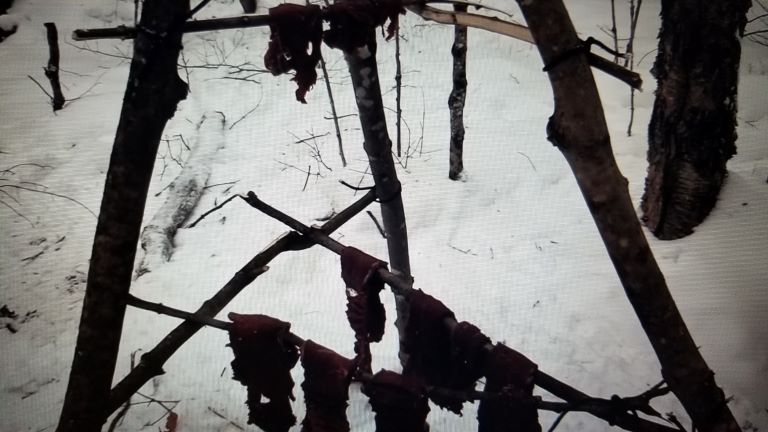
Tip # 9 – Pay Attention to the Smokes Color
A good smoke appears will be difficult to see. It should either be white or a light blue color, which is a clear sign of a well ventilated fire that is burning good hardwood.
If the smoke appears black and thick, that is a signal that there is not enough ventilation and it will leave your food with a bitter taste. If you do notice thick, black smoke, try moving the meat away from it and reposition the wood to allow better airflow.
Keeping a hot bed of coals will also allow new wood to ignite quickly and the chances of smoldering which causes thick smoke.
The end result of smoking meat in the wild
As always, have fun with the process and don’t be too hard on yourself if your first go at it isn’t perfect. Doing anything really well takes practice and time.
The process of smoking meat over an open campfire is a valuable life skill that can be done whether it is to impress on a family camping trip or if your survival depends on it in a backwoods excursion.
In either event, you’ll be able to make some delicious smoked meat and feel good about it too.

